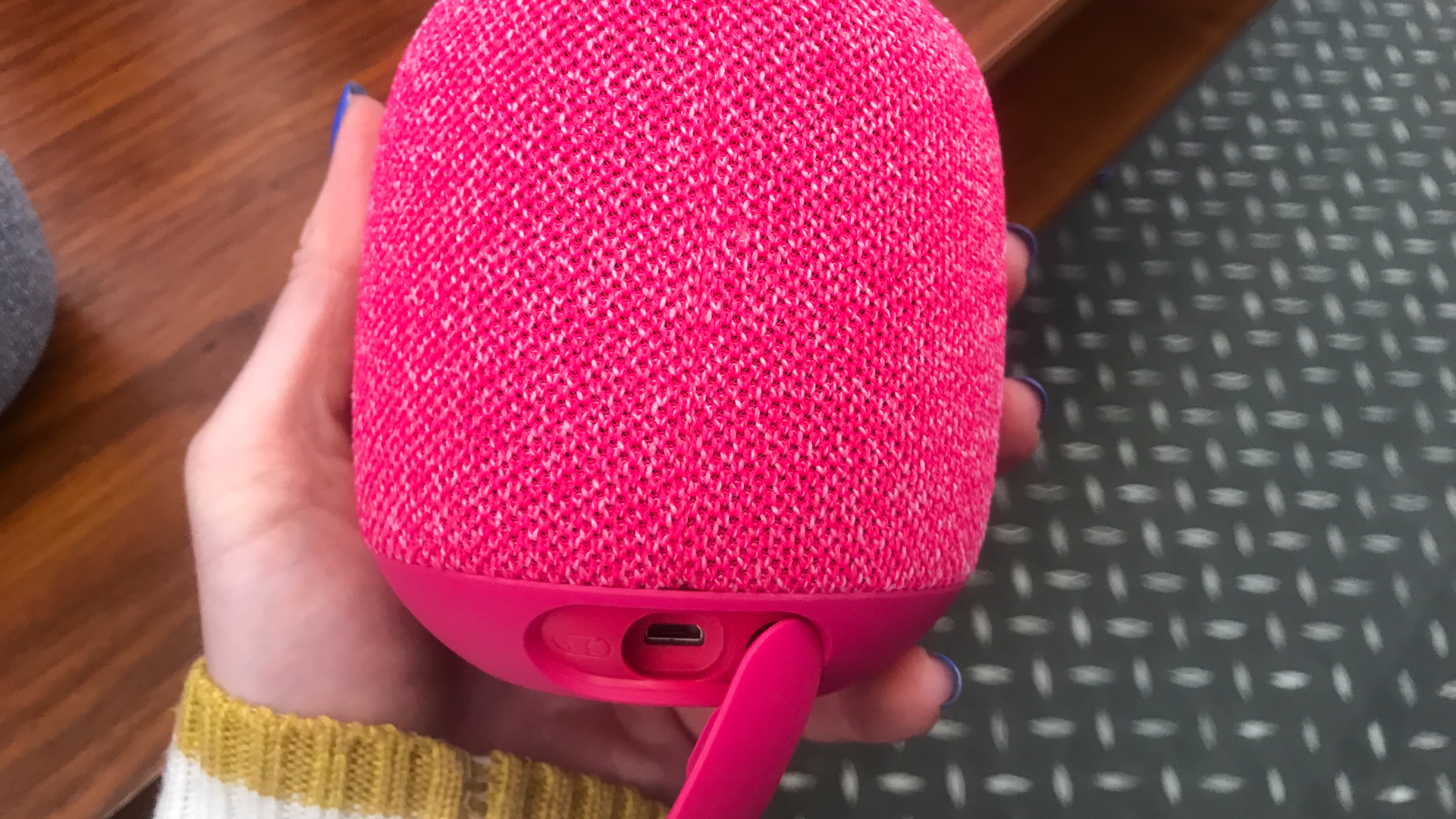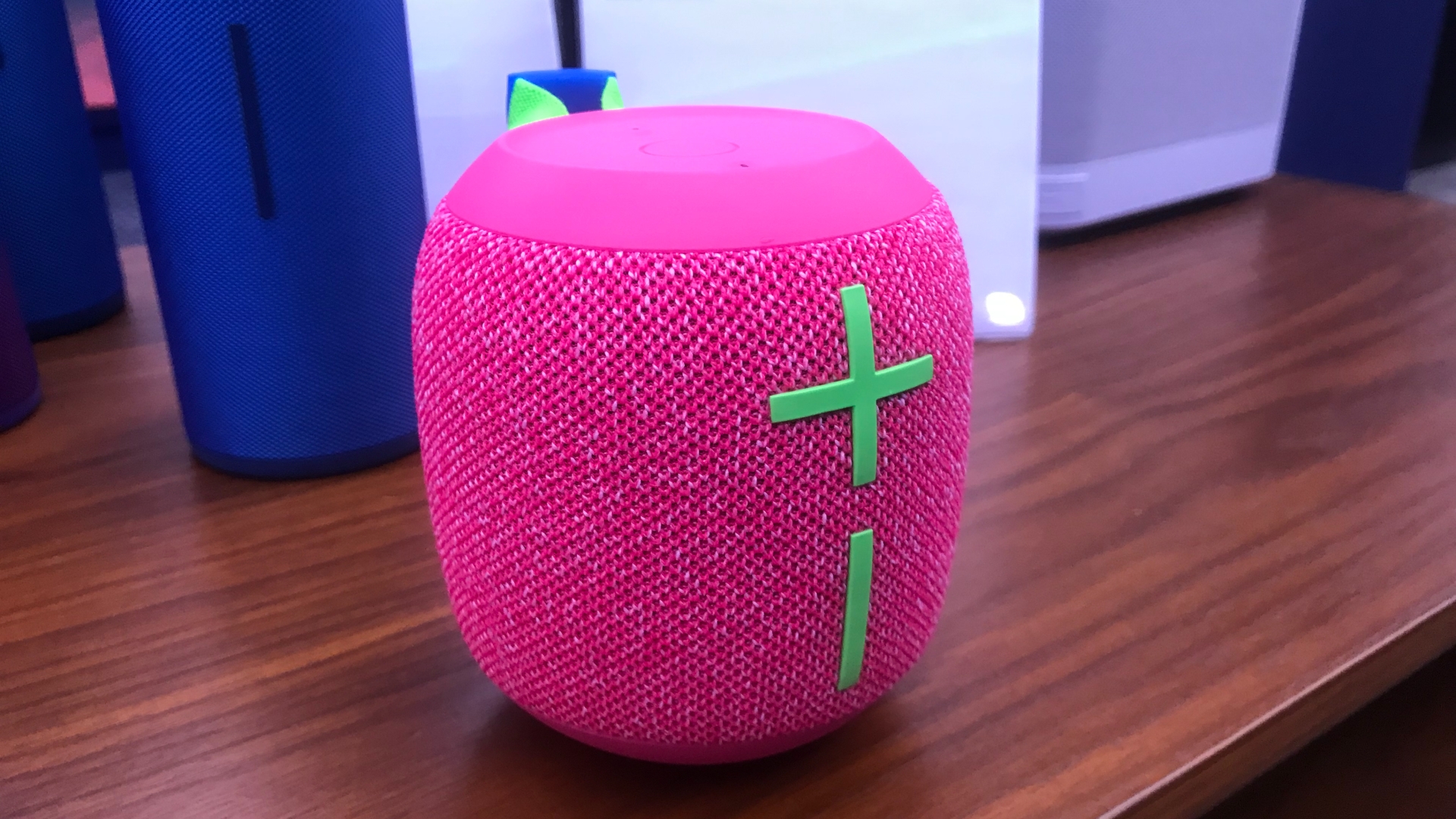It's no secret I've been hankering after the UE Wonderboom 3 for years. Why? Because the 2019 Wonderboom 2 was just so good – even now, it's sitting pretty as one of the best Bluetooth speakers we've had the pleasure of testing.
And finally, today, it has arrived! The Ultimate Ears Wonderboom 3 comes in four new jackets: Joyous Bright (which is actually gray), Hyper Pink, Performance Blue, and Active Black – all made with a minimum of certified 31% post-consumer plastic.
The crisp, bassy audio should now last up to 14 hours – ie. an hour longer than the Wonderboom 2 – and the mobile Bluetooth range is up to a claimed 40m versus the 30m range of the second-generation Wonderboom.
But that's it, folks. That's where the upgrade list ends, as far as I can see.
As with the Wonderboom 2, the Wonderboom 3 still floats. It also has the same cute 'outdoor boost' tree button on its underside, and it carries the like-for-like IP67 rating for dust and water ingress. But it also sports the same micro USB charger that was relatively old news even in 2019 – so anyone looking to carry one USB-C charger to rule them all will be sorely out of luck.
Ultimate Ears has been cagey about the Bluetooth version supported and, as far as I can tell, there's been no change in the driver configuration under its new, eco-friendly jacket either – no racetrack-shaped drivers (as seen in JBL's latest slew of speakers), no extra few watts of power, nothing.
I'll be honest: I'm disappointed.
Did I mention that the Wonderboom 3 is not backward compatible with older Wonderbooms either? So, if you have a Wonderboom 2 kicking about, you won't be able to daisy-chain it to your shiny new Wonderboom 3 for bigger mono or stereo sound.
Opinion: Wonderboom 3 is woefully low on upgrades, and I reckon it won't wash

Ultimate Ears is leading with the sustainability angle here, but as a lover of its products, I'd hoped for more.
Having held the Wonderboom 3 (expect a full review soon), the new colorways aside, I find it indistinguishable from its older sibling – and therein lies the problem.
Where is the USB-C quick charge? And would it have been too much to ask UE's engineers to offer its avid fan base a companion app? That might have opened the door to multi-room connectivity using these affordable speakers or beefing up the sound with its newest Hyperboom.
Don't get me wrong, the Hyperboom is a very talented product, and the Wonderboom 2 was an award winner back in 2019 during my tenure at What Hi-Fi?, which makes this 2022 update all the more disappointing.
In the three years since 2019, Bluetooth 5.0, 5.1, 5.2, and even 5.3 have cropped up in competing models and fresh wireless earbuds, along with thousands of newer Bluetooth speakers boasting ever-improved power handling, better stamina, mics and extra perks like USB-A ports to charge your phone while you boogie. And this just… well, it doesn't seem enough.
I understand that UE's focus has been on using more eco-friendly materials, but if you choose not to upgrade, you haven't contributed to the problem now, have you? The fast-fashion nature of consumerism is surely only compounded here because, I believe, with these meager upgrades (an extra hour of play, an extra 10m of range) few fans will buy a third-gen model.
Ultimate Ears has launched the Wonderboom 3 with the same asking price as the inaugural Wonderboom and Wonderboom 2: $99 / £89 / AU$129. Will it become the latest addition to our best waterproof speakers buying guide? I can't see it happening – because a key upgrade (and let's be clear, I mean the charger) hasn't been made.
Is it worth buying a new Wonderboom 3? Obviously, you should judge for yourself (and I do love that pink colorway), but for me, the answer is no. You do get a micro USB charging cable in the box – that's handy because I don't know that I still have one at home – but if you like your tech to move with the times, this is an update to miss.

Source: TechRadar